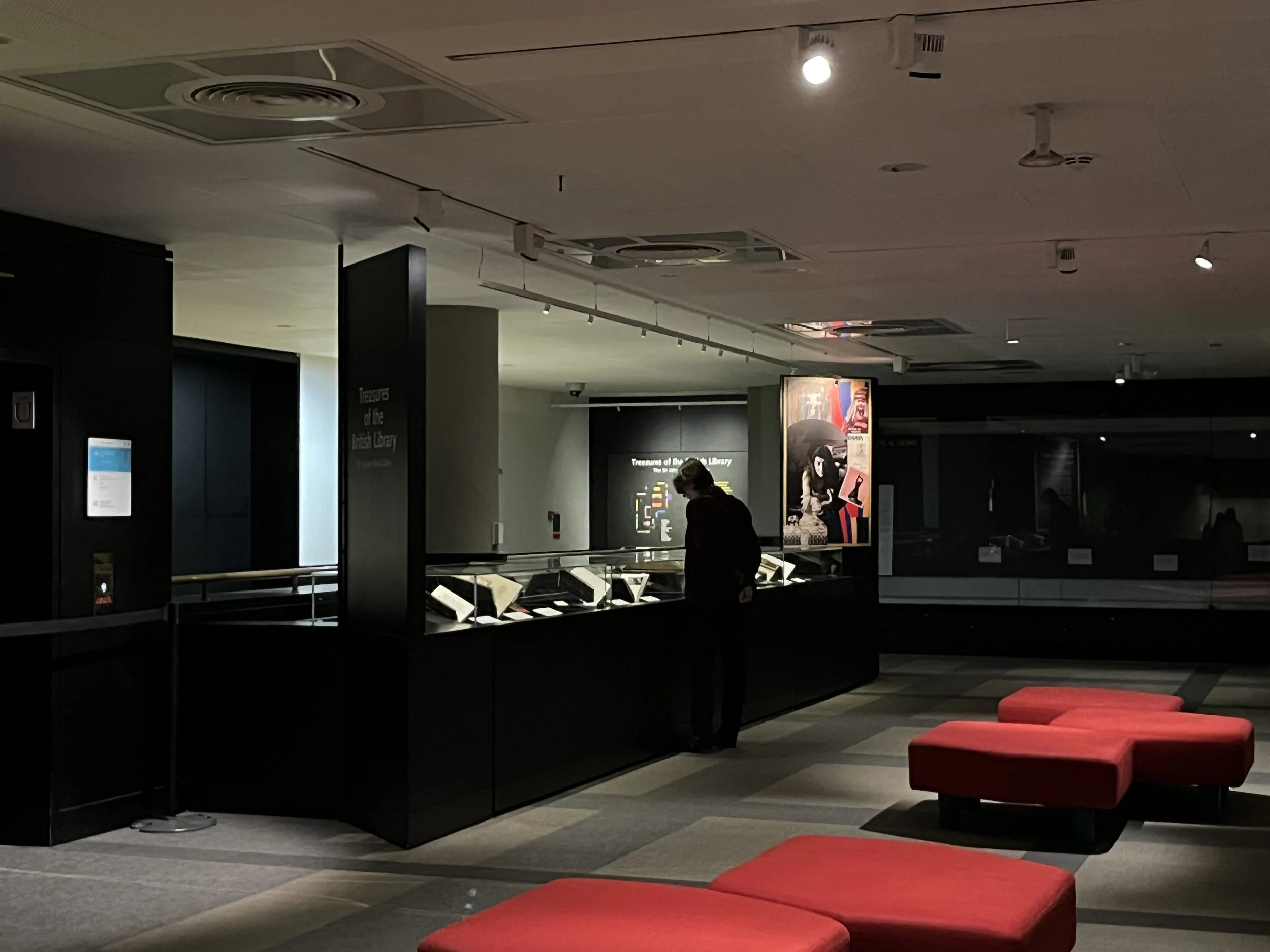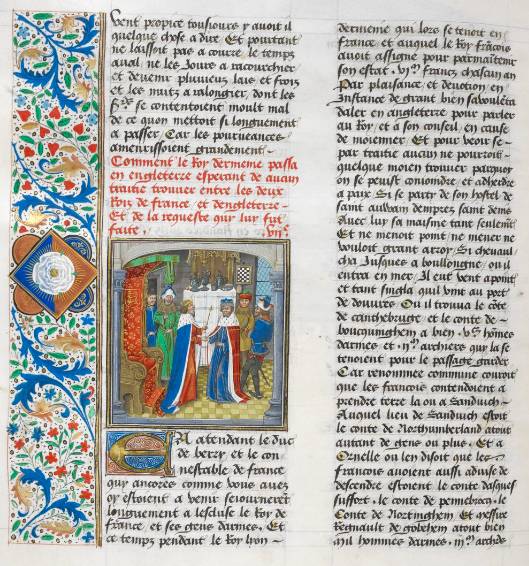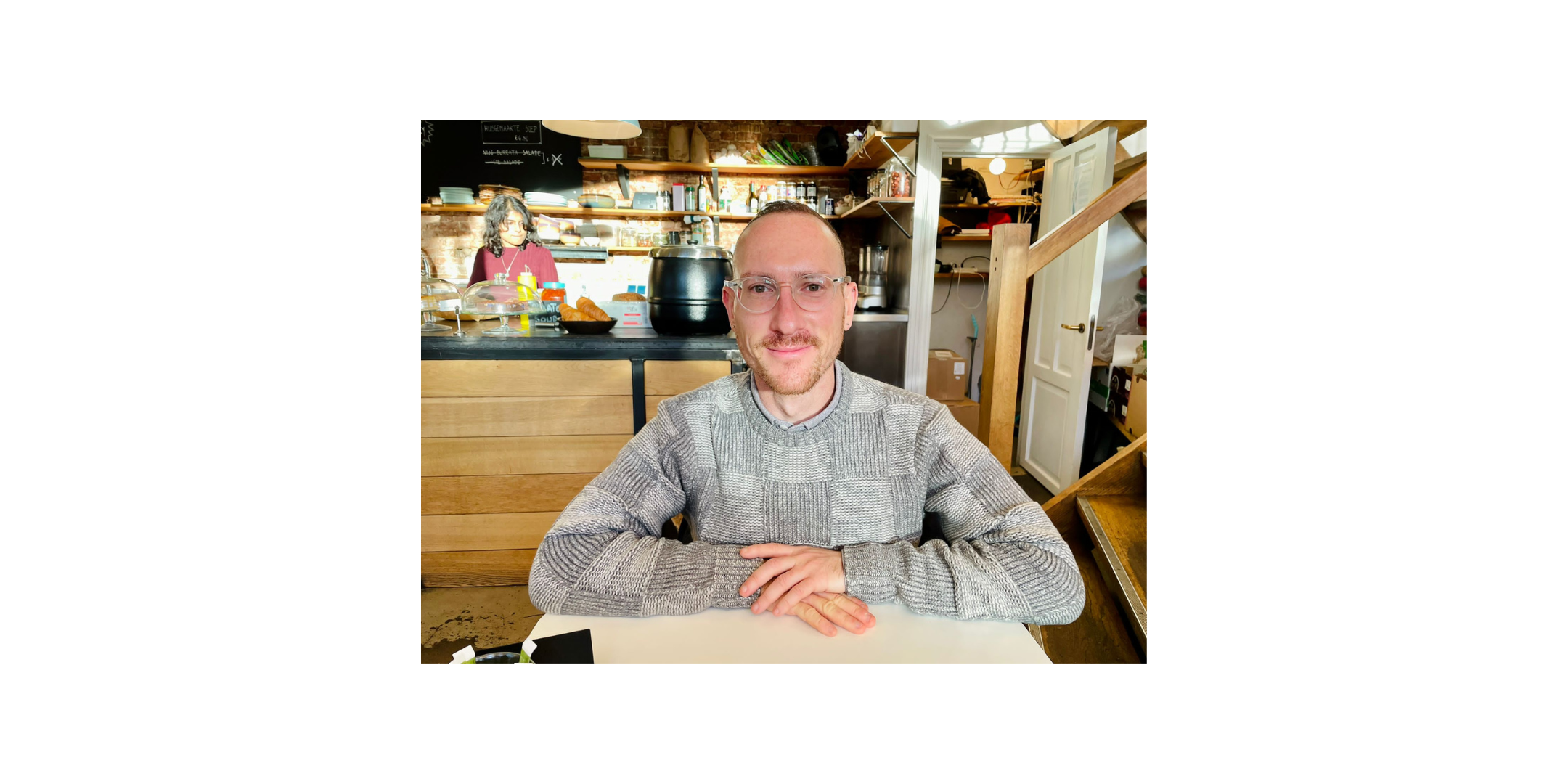By Dr Erica Payet, Programme Manager
The Armenian Institute is proud to be participating in the British Library’s Britanahay Բրիտանահայ: Armenian and British display, which will be shown in its Treasures Gallery from 27 September 2025 until 22 February 2026.
It all started about two years ago, when links between our team at the Armenian Institute and Dr Michael Erdman, curator and Head of Middle East and Central Asia Collections at the British Library, were formed. Michael is a highly experienced professional and scholar. As he explains in his rich blog From Altay to Yughur, he has been working with library collections in dozens of languages spoken across Eurasia for over 10 years now. After finishing degrees in finance and economics in Canada and Spain, he first worked as an economist before serving as a consular and diplomatic official for Canada in Kuwait, Saudi Arabia, El Salvador, Ecuador, Panama, and Spain. In 2013, he returned to academia, completing his MA in Turkish Studies, followed by a doctorate in Near and Middle Eastern Studies, both at SOAS. His PhD, entitled Divergent Paths, discussed conflicting historiographies in Turkey and the Soviet Union in the 1920s and 30s.
Dr Michael Erdman
His variety of interests and specialities can be further discovered in his written work– a wealth of articles published in academic journals and on his blog. Learning about his plans to showcase material related to Armenia and the Armenian diaspora from the British Library collection was especially exciting.
Back then, in early 2024, we were only at the beginning of our oral history project Heritage of Displacement (see my first blog post!). We were still in the process of training our volunteers and had not yet started recording interviews. Several of you will be familiar with this moment in the project, either as interviewees or as volunteers. Meeting on common ground and filled with excitement and curiosity about discovering British-Armenian connections, we shared the project’s vision with him and, together, began to see clear links and promising pathways for meaningful conversations.
Independently, we carried on our work for some months. Michael researched the British Library’s rich collection of Armenian material and selected relevant documents. While we were recording and processing interviews, he was busy crafting an exciting display narrative for all to enjoy. We converged again to learn which objects would be displayed, and to brainstorm the main themes we could draw from the relationship between the exhibited pieces and the contents of the interviews. On our end, I sent snippets of interviews to him as very small teasers, just a taste of the wealth of stories and voices we were collecting. It was at this point that we started to see the mounting potential there was in marrying contemporary oral histories with the centuries-old material heritage preserved in the Library. For instance, while Michael was considering including a page from a 1914 Egyptian-Armenian almanack, I recalled that we had testimonies from UK Armenians who had lived in Egypt, offering a complementary perspective on the Armenian community there. Similarly, several Cypriot-Armenians we interviewed spoke about their memories of the Melkonian Institute in Nicosia—an oral history that resonated with the decision to feature a photograph of the school in the display, and so on.
Michael agreed to assemble the audio clips into a few broad themes, which allowed us to include as many clips as possible. Last spring and summer became an intense period of work: studying the interview summaries prepared by our dedicated volunteers (see blog post 2), carefully listening through more than 50 hours of recording, and selecting compelling passages to shape into coherent, dynamic audio clips. We created far more clips than the exhibition could accommodate, but this effort is not wasted—they will serve future opportunities for sharing the interviews publicly. Each clip was given a title, a concise summary, its duration in minutes and seconds, and a clear indexing system, allowing us to share them with Michael as seamlessly as possible.
Care was also taken to anonymise the clips for the British Library display: only interviewees’ first names would be used, preserving a degree of privacy in the context of such a high-profile institution. Each interviewee was then contacted to confirm their consent for inclusion, and many—understandably—were curious to know which excerpts from their interviews would be featured. They were individually sent these details, and we hope that many of them will have the chance to visit the display in person.
We explored several physical options for how visitors might engage with the audio: speakers, headphones, tablets, or web links. Exhibiting audio content in a museum–where the visual sense typically dominates–presents both a challenge and an important accessibility question. We also had to weigh considerations of costs, practicality, data safety, and the time constraints of producing and hosting the material. In the end, we chose to rely on visitors’ own smartphones, providing QR codes that link directly to the themed collections of audio clips. Within the exhibition design, this makes the audio presence discrete and “light-touch,” yet highly accessible, avoiding the need for additional hardware such as headphones, audio guides, or tablets. Visitors can simply scan the QR codes for each broad theme, browse a list of clips accompanied by short summaries, and decide what they wish to listen to.
Our collaboration with Michael has extended well beyond the crucial task of selecting audio clips. It involved drafting an agreement to define the terms of our work together, cross-checking all exhibition texts and labels, coordinating on promotional material, creating URLs and QR codes for the display, and even organising a curator-led presentation (book now). Alternatively, you can read Michael’s detailed account of the display’s contents on his blog to learn more about each exhibited object. As with any large-scale exhibition, there has been a great deal to plan and manage.





We wish every success to this display in the truly magical setting of the British Library’s Treasures Gallery–a space that hosts many of the Library's other treasures, including a Shakespeare first folio and the Beatles' original lyrics drafts! We hope you will also get to explore these other thematic displays when you visit. We are deeply grateful for this opportunity to create connections between past and present; between visual, paper-based material and audio, oral-historical content; between the famous and the anonymous; and across a wide geographical range, from the UK and Armenia to Egypt, India, Cyprus, and beyond. Michael’s expertise and openness have been invaluable, and it has been a pleasure to collaborate with him and his team at the British Library on this exciting project celebrating the Armenian community in the UK.
























